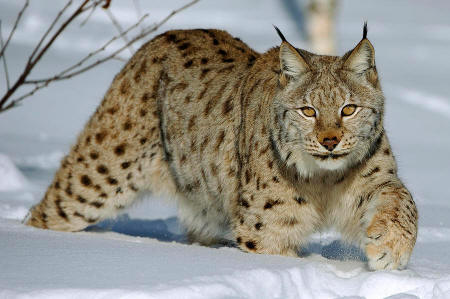Best Management Practices
For Traps and Trapping
 "BMP"
is an acronym for "Best
Management Practice." BMPs are often
developed by industry experts to reduce
and solve problems in the best and
safest ways possible.
"BMP"
is an acronym for "Best
Management Practice." BMPs are often
developed by industry experts to reduce
and solve problems in the best and
safest ways possible.
Trapping BMPs have advanced and modernized traps and trapping technology in the U.S. as a result of many years of scientific research supported by trap testing procedures approved by more than 100 member countries of the International Organization for Standards (ISO).
ISO recognizes the importance of two classes of traps; those designed to kill rapidly and those designed to restrain. Both classes of traps must perform to high standards of human safety, selectivity, efficiency, & practicality. High animal welfare (humaneness) scores must also be met. Killing traps must kill consistently and rapidly. Restraining traps must provide low trauma scores.
The result is BMPs have identified the best performing traps for all common American species, and that effort continues as new traps are developed with promising performance features.
The trapping BMP effort was initiated in 1996 in part to fulfill an American commitment recognizing an international agreement to improve traps and trapping methods signed by Canada, the European Union, and Russia.
Those markets are invaluable to U.S. producers and wildlife managers. The value of wild furs is the economic generator to manage predators, furbearers, and the species they interact with.
A method is needed to discover better traps and continually develop better and better traps. Many trapper ideas for better traps have been tested, including many modifications of standard traps, with great results. That has led manufacturers to produce traps that meet BIVIP performance standards. The marketing advantage of a BMP approved trap is significant as trappers have learned thorough testing proves BMP traps meet their needs.
The public has ownership of wildlife as well as landowners, sportsmen and producers. Owners expect wildlife to be managed with the best technology available. BMPs help meet this need.
Congress has funded the BMP effort because furbearer management is important to agriculture, wildlife management, human health, and international trade.
Research responsibilities are overseen by the Association of Fish and Wildlife Agencies. AFWA is comprised of all state game agencies as well as Canadian Provinces and other conservation minded groups. The BMP work is carried out by a technical work group of wildlife biologists and includes expertise from the National Trappers Association and Fur Takers of America.
Trappers and technicians are hired to accomplish the field work of testing traps according to a random trap selection process, and all data is recorded. Target species are killed, labeled with a unique code number, and frozen until they can receive a full body necropsy (animal autopsy) from a certified wildlife veterinary pathologist. All injuries are noted and scored without knowledge of the trap used.
Dead animals in killing type traps require noting the trap strike location, as this information is compared to previously tested knowledge as well as sophisticated computer modeling programs to assess times to death.
Therefore the process of developing BMPs for traps requires ISO protocols, trapper expertise, trained observers, wildlife biologists, particular veterinarian expertise, and competent data analysis.
Virtually everyone benefits from trapping BMPs! Trappers are directed to the most effective, selective and affordable traps. Trap manufacturers can take advantage of market opportunities and strive for marketing advantages that come with still better performing devices. Wildlife managers are assured trade will continue in raw furs so they can plan and manage for appropriate harvests. The public is assured furbearers are harvested with the best methods and tools available, and the welfare of trapped animals' increases constantly!
Due to the wisdom of the U.S. Congress, the quest to discover and promote the use of the best possible traps will continue into the future. There is no need to be satisfied just because BMPs have been developed for all common furbearers. Betterment will continue to serve us all.
It is reasonable to consider whether trapping as a wildlife management tool will be needed well into the future. The facts speak for themselves:
Many furbearers and predators are nocturnal in habit, and are not vulnerable to hunting.
Poison is an alternative to trapping excess wildlife, but a very limited alternative.
Traps are necessary to capture endangered animals for protection, propagation and relocation, such as was necessary to reestablish black-footed ferrets and wolves in several western states.
Trapping is consistent with Conservation which simply means Wise-Use of our natural resources.
Wildlife must be monitored and managed with state of the art science for the good of all. There simply are no better, safer, or more effective alternatives to traps.
We can be assured BMP traps are the best of the best.